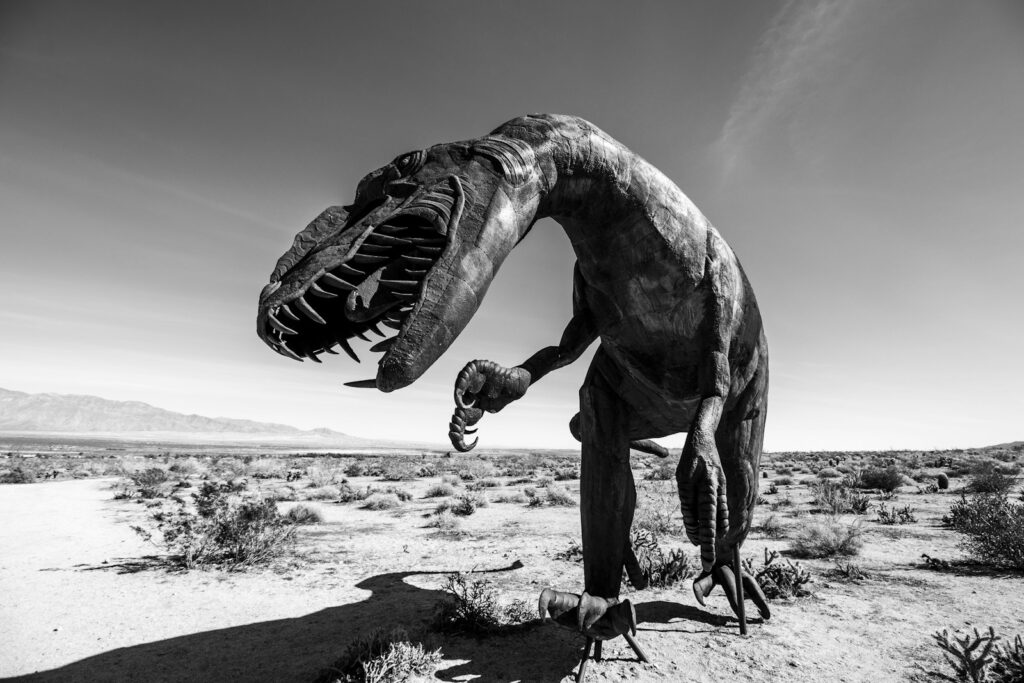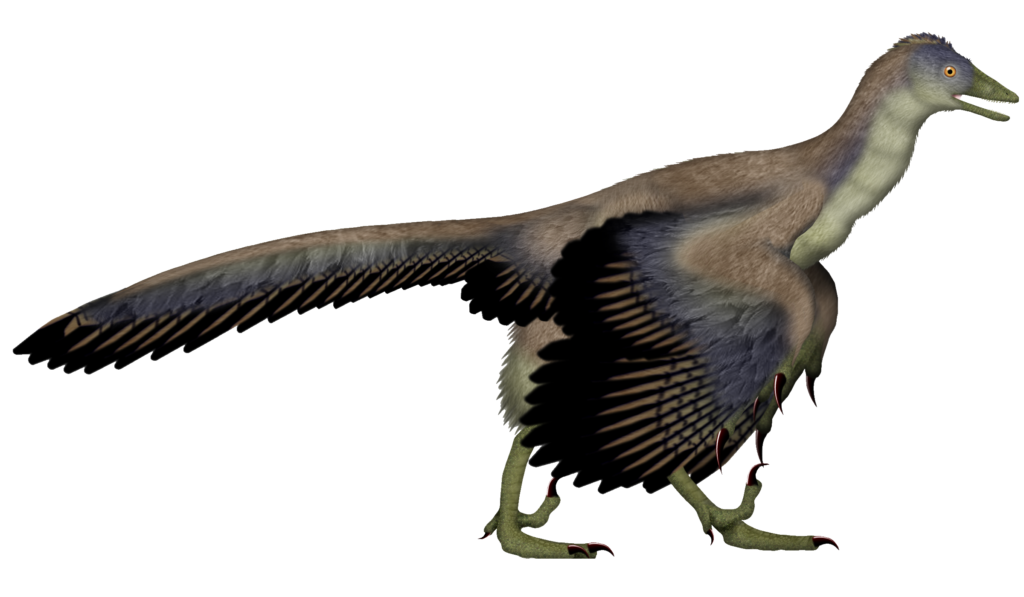Dinosaurs ruled the Earth for over 165 million years, facing and adapting to numerous environmental challenges throughout their long reign. These remarkable creatures thrived in conditions that would be inhospitable to many modern animals, from scorching deserts to freezing polar regions. Their ability to survive and evolve in response to extreme environments represents one of the most fascinating chapters in Earth’s natural history. By examining how dinosaurs adapted to these challenging conditions, we gain invaluable insights into evolutionary biology and the remarkable resilience of life on our planet.
The Mesozoic Climate: Different from Today

The Mesozoic Era, when dinosaurs dominated the Earth, featured a climate significantly different from our modern world. During much of this period, Earth experienced a “greenhouse” climate with no polar ice caps and generally warmer temperatures globally. Carbon dioxide levels were often higher than today, creating conditions that would seem alien to us. The continents were arranged differently as well, with Pangaea gradually breaking apart throughout the dinosaurs’ reign, creating new environmental niches and challenges. These background conditions set the stage for dinosaurs’ adaptations as they evolved in a world that was fundamentally warmer but still featured significant environmental extremes and variations that required specialized adaptations.
Polar Dinosaurs: Surviving Long, Dark Winters

Perhaps most surprisingly, dinosaur fossils have been discovered in ancient polar regions, challenging our perceptions of these creatures as solely tropical or temperate dwellers. In what is now Alaska, Australia, and Antarctica, dinosaurs faced months-long periods of darkness each winter, despite the overall warmer global temperatures. Species like Leaellynasaura and Cryolophosaurus developed specialized adaptations to handle these conditions, including possibly enhanced vision for low-light conditions and potentially seasonal metabolic adjustments. Some paleontologists believe certain polar dinosaurs may have remained active year-round rather than migrating, suggesting they possessed adaptations for cold tolerance. These discoveries have revolutionized our understanding of dinosaur physiology and behavior, showing their remarkable adaptability to extreme seasonal variations.
Desert-Dwelling Dinosaurs: Masters of Aridity

Numerous dinosaur species thrived in hot, arid environments that would challenge even the most adapted modern desert dwellers. Fossil evidence from ancient desert settings has revealed specialized adaptations for water conservation and heat management. Some desert-dwelling dinosaurs likely had enhanced kidney function to minimize water loss, similar to modern desert mammals and reptiles. Their scales may have provided critical protection against water loss through the skin while also reflecting sunlight to prevent overheating. Behavioral adaptations likely included being active during cooler parts of the day and seeking shelter during peak heat periods. The Gobi Desert has yielded particularly important fossils showing how dinosaurs like Velociraptor managed to survive in extremely challenging dry conditions.
Size as an Adaptation Strategy

The enormous size of many dinosaurs wasn’t just impressive—it was a crucial adaptation for environmental challenges. Large body mass provided an evolutionary advantage through thermal inertia, helping dinosaurs maintain stable body temperatures despite environmental fluctuations. This phenomenon, known as gigantothermy, allowed massive sauropods to retain heat during cool nights and resist rapid temperature changes. Their size also enabled them to cover vast distances in search of food and water during resource scarcity, an important survival strategy in unpredictable environments. Additionally, for the largest dinosaurs, their tremendous size meant few predators could threaten adult individuals, providing security in environments where hiding places were scarce. This size-based adaptation strategy proved remarkably successful across multiple dinosaur lineages over millions of years.
Metabolic Adaptations: Between Cold and Warm-Blooded

The question of dinosaur metabolism has significant implications for how they survived in extreme environments. Modern research suggests many dinosaurs occupied a middle ground between typical cold-blooded reptiles and warm-blooded mammals. This “mesothermy” provided the advantages of both systems—they could generate some internal heat while not requiring the constant high food intake of fully warm-blooded animals. Evidence from bone structure, growth rates, and oxygen isotope studies increasingly supports this view of dinosaur physiology. For species in variable environments, this metabolic flexibility likely allowed them to thrive where strictly cold-blooded or warm-blooded animals might struggle. Some dinosaur lineages, particularly those leading to birds, developed more active metabolisms that eventually evolved into the true endothermy (warm-bloodedness) seen in modern birds.
Feathers: Not Just for Flight

The discovery that many dinosaurs possessed feathers has transformed our understanding of these creatures and their environmental adaptations. Initially evolving not for flight but for insulation, feathers provided crucial temperature regulation in variable climates. For dinosaurs in cooler environments, including polar regions, feather coverings would have retained body heat effectively, much like modern birds’ down feathers. In hot environments, specialized feather structures could have aided in shedding excess heat through increased surface area. Fossil evidence shows that feathers evolved in multiple dinosaur lineages, suggesting their significant adaptive value across different environmental conditions. The presence of feathers in small, active predators like Velociraptor indicates they were particularly beneficial for smaller dinosaurs with higher metabolic demands and less thermal inertia than their gigantic relatives.
Seasonal Behavioral Adaptations

Dinosaurs likely employed sophisticated behavioral strategies to cope with seasonal environmental challenges. Evidence suggests some species may have migrated seasonally, following food resources or avoiding extreme weather conditions, similar to modern birds and mammals. Others appear to have remained in challenging environments year-round, possibly entering states of reduced activity during resource-scarce periods. Nesting behaviors show remarkable adaptation to environmental conditions, with some species creating communal nesting grounds in resource-rich areas. Fossil trackways and bone beds provide evidence of herding behavior, which would have provided protection and potentially increased foraging efficiency in harsh environments. These behavioral adaptations, combined with physical and physiological traits, created a powerful survival toolkit for dinosaurs facing environmental extremes.
Specialized Feeding Adaptations

Dinosaurs evolved remarkable feeding specializations that allowed them to exploit food resources in challenging environments. In arid regions, some herbivorous dinosaurs developed powerful grinding teeth and digestive systems capable of processing tough, fibrous plant material that other animals couldn’t utilize. Predatory dinosaurs in extreme environments often showed adaptations for opportunistic feeding, allowing them to take advantage of whatever prey was available seasonally. Fossil evidence from coprolites (fossilized feces) and stomach contents reveals the diverse diets many dinosaurs maintained to survive in resource-limited settings. Some species developed specialized jaw structures and dental arrangements that allowed precise food selection, maximizing nutritional intake from available resources. These feeding adaptations played a crucial role in allowing dinosaurs to persist through environmental changes and resource fluctuations.
Nesting Strategies for Environmental Challenges

Reproductive adaptations were crucial for dinosaur survival in extreme environments, particularly regarding egg-laying and nesting. Fossil evidence shows that many dinosaurs carefully selected nesting sites to provide optimal conditions for egg development despite environmental challenges. Some species appear to have buried their eggs, allowing soil temperature and humidity to regulate incubation conditions. Others built mound nests with specific materials that generated heat through decomposition, helping maintain stable temperatures for developing embryos. Colonial nesting, observed in multiple dinosaur species, provided safety in numbers and possibly allowed for more efficient parental care in harsh environments. These sophisticated reproductive strategies ensured successful reproduction even when facing seasonal extremes or unpredictable environmental conditions.
Water Conservation Mechanisms

Surviving in arid environments required dinosaurs to develop effective water conservation strategies. Like modern desert-dwelling reptiles, many dinosaurs likely had specialized kidney structures to concentrate waste products and minimize water loss. Their scaly skin provided an effective barrier against evaporative water loss, essential in hot, dry conditions. Behavioral adaptations probably included activity patterns that minimized exposure during the hottest, driest parts of the day. Some desert-dwelling dinosaurs may have obtained most of their water from their food rather than drinking directly, similar to many modern desert animals. Fossils from ancient desert environments show dinosaurs were present even in extremely water-limited settings, a testament to their advanced physiological adaptations for water efficiency.
Surviving Catastrophic Events

Throughout their 165-million-year reign, dinosaurs faced and survived numerous catastrophic environmental changes. Major volcanic eruptions, asteroid impacts (before the final extinction event), and dramatic climate shifts all challenged dinosaur populations. The fossil record shows evidence of population crashes followed by recoveries, demonstrating dinosaurs’ resilience as a group. Their wide geographic distribution across multiple continents provided crucial population buffers against localized catastrophes. Biodiversity within dinosaur groups also contributed to their survival through environmental crises—when some species couldn’t adapt, others with different specializations could take their place in ecosystems. This adaptability at both individual and group levels allowed dinosaurs to persist through environmental disruptions that eliminated many other animal groups.
The Ultimate Adaptation: Evolving Into Birds

Perhaps the most successful adaptation strategy of dinosaurs was the evolutionary pathway that led to birds—the only dinosaur lineage that survived the end-Cretaceous extinction event. Theropod dinosaurs evolved increasingly bird-like characteristics over millions of years, developing adaptations that would prove crucial for survival. Smaller body size, efficient lungs, high metabolism, and insulating feathers created a highly adaptable body plan. These adaptations originally evolved for other purposes but ultimately enabled birds to survive through the catastrophic conditions following the asteroid impact. The avian respiratory system, with its efficient oxygen extraction and temperature regulation, represents one of the most sophisticated adaptations in the animal kingdom. Today’s 10,000+ bird species stand as a living testament to the remarkable adaptability of dinosaurs, carrying their ancestors’ legacy into the modern world.
Conclusion

The success of dinosaurs in extreme environments wasn’t due to a single adaptation but rather to a complex interplay of physical, physiological, and behavioral strategies developed over millions of years of evolution. From the scorching deserts to frigid polar regions, dinosaurs demonstrated remarkable adaptability, evolving specialized solutions to environmental challenges. Many of their adaptations—feathers, efficient respiration, and metabolic innovations—continue today in their avian descendants. While the non-avian dinosaurs ultimately succumbed to the catastrophic aftermath of an asteroid impact, their 165-million-year dominance stands as a testament to their extraordinary capacity for survival and adaptation. In studying how dinosaurs thrived in extreme environments, we gain not only insight into Earth’s past but also valuable perspectives on adaptation and resilience in the face of environmental change.




